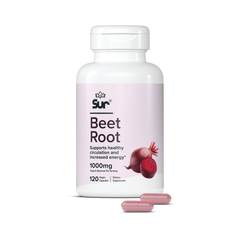Especially for those of us athletes in the northern portions of the Northern Hemisphere, January and February can be the trickiest months to execute well. For most, races are still quite aways away, although the countdown units have switched to weeks, not months. Snow-covered roads and mid-afternoon sunsets present plenty of challenges to even the most motivated of athletes. It’s no surprise that many athletes struggle a bit with how to make the best use of these winter months, but with some creativity and flexibility, January and February can set you up to show up to your first races in excellent form.
I’m a pro athlete who has spent most of my winters in snowy Chicago, as well as an endurance coach with a roster that has predominantly cold-climate dwellers. I’ve suffered through winters with the best of them, nailed some pre-seasons, completely messed up others, and learned plenty of lessons guiding my athletes through the winter. From those lessons, I’ve come up with the Six Pre-Season do's and dont's for how to get through winter as an endurance athlete, and come out stronger in the end.
#1: DO keep a long-range view of your season, and DON’T try to win February.
Motivated athletes are simply a joy to work with as a coach – and lucky for me, endurance sports are chock full of the sorts of people with plenty of internal drive. For many of us, motivation is particularly easy to find in January – it’s a new year, fresh start, all of that. Add in the very noticeable fitness improvements that are natural when rebuilding after some downtime, which can make us just want to do more and more, and that’s a recipe for too much motivation. Yes, that’s a thing!
When we’re in the moment, feeling good, and progressing forward, it’s so easy to lose sight of the big picture. Remember, for most of us, the season is long, and you need room to grow throughout the year. The sad truth that many have learned the hard way is that right on the other side of peak fitness is often burnout, injury, illness, and, at best, stagnation. Do yourself a favor, and don’t toe that line too early (if at all). Temper that enthusiasm and save some for summer.
Take it from me – several years ago, I had an early-season fire in the belly, and was the undisputed Queen of February – setting training PRs left and right, always pushing the envelope in terms of intensity, sneaking in extra sessions. Where did that leave me? Knocked down in March with seemingly non-stop niggles, illnesses, and exhaustion – and my first race wasn’t even until April! I salvaged the year after some hard rest, but will always wonder what could have been if I’d been more patient and never actually had to go into salvage mode.
#2: DO take the time to address your weaknesses, but DON’T completely ignore one sport.
With races still a bit down the road, January and February are ideal times to take an honest self-inventory, and put some focused attention on the areas where you can stand to improve. For example, most, if not all, endurance athletes would benefit from increased strength and mobility – now is the time to hit the gym or find some good yoga sessions you can fit around your training. If you’re a multisport athlete and one discipline is lagging behind the others? Use these early months to put a little focus on the low-hanging fruit. I’ve had many athletes use the pre-season to significantly increase their swim yardage and frequency, and it always pays off with improved swim times, more comfort in the water, and better overall fitness. And, let’s be honest, our skin is already dry in the winter; who’s going to even notice a little extra chlorine itch?
But while you’re focusing on those weaknesses, don’t completely forget about your strengths. Come March or April, your body will not be happy with you if you need to rebuild your run from scratch (been there, done that WAY too many times). Time is always limited, but it’s definitely a good idea to keep the non-focus sports in maintenance mode.
#3: DO embrace the indoor training, but DON’T overdo it on intensity.
Oh, what a time to be alive, and an endurance athlete in the winter! Recent technological advances have made indoor training not only extremely effective, but also fun and time efficient. Gone are the bad old days of staring at a wall, dreaming of spring while miserably pedaling away on a bike trainer – indoor riding has so transformed in the past five+ years that it’s almost unrecognizable. Zwift, Rouvy, Velocity, and other indoor platforms allow you to explore varied terrain, ride with friends, find community, complete extremely focused workouts, and more. Likewise, modern treadmills provide ideal surfaces and environments for improving run economy and doing safe and effective speed work.
No, you’re not outdoors, feeling the sun on your face. Or, more realistically, the cold. But, if you can embrace the smart trainers and treadmills (seriously, let’s put a moratorium on the term “dreadmill”) as tools for improvement, and find the fun in them, you’ll be much better for it.
That said, indoor training does lend itself to more intensity. Hours on the trainer go by faster in Zwift races, or doing hard, puke-tastic, threshold intervals. Remember Rule # 1 – have a long term view of the season. Too much intensity in January and February, and you may find yourself, at best, peaking too early in your race season, and at worst, injured before you even toe the line.
#4: DO mix things up, but DON’T injure yourself by overdoing it.
Coaches’ philosophies and strategies will always vary, but most will agree that the early season/ pre-season is an excellent time to work on building a solid base and aerobic fitness. And the beauty of aerobic fitness is that it translates particularly well across disciplines. Meaning – get out there and try new things! Nordic skiing, snow-shoeing, fat biking, hiking – these are all excellent activities for building endurance, working on new movement patterns, and improving strength. Most importantly, throwing in some variety, and getting outdoors, is great for mental health.
But as you explore new skills and sports, remember to keep your eyes on the prize and be careful. If you have questionable mountain bike skills, going full send on the gnarliest of trails might not be a great idea. Nothing will ruin your racing season quicker than broken bones.
#5: DO get outside, but DON’T put yourself in perilous situations.
I’m no doctor, but I can say with 100% certainty – outside is good for you. If you’ve ever suffered from Vitamin D deficiency (and if you’re north of the Mason-Dixon line, there’s a pretty strong chance you have), you know how essential the power of the sun is in maintaining our mood, energy, and all around ability to function. For your health and sanity, try to get out and exercise when the sun is up at least a couple times a week. You know what those extreme outdoors people always say: “there’s no bad weather, only bad clothing.” That sentiment’s a bit extreme for me, but you get the point.
However, there’s definitely a limit to the outside insanity, and it’s up to each of us to make our own rules. Don’t force yourself into extreme conditions just for bragging rights. Ice and running? Bad combo. Gale force winds and road cycling? Not your smartest move. On those days, see Rule #3, and embrace your pain cave.
#6: DO enjoy following your favorite pros’ warm weather getaways, but DON’T think you can’t have success at home.
It’s fun logging on to social media and seeing those lucky souls who are able to chase summer, doing their thing with lengthy pre-season training camps in Lanzarote, Tucson, or Clermont. I’ve been there myself, winter birding in Florida while well below the average retirement age, just so that I wouldn’t have to deal with the cold and could swim in the warm sun. It’s an excellent experience and by all means, support your favorite pros, and give them the likes and the kudos as they put in monster weeks in the sun. And if you get a chance, get yourself to a training camp for a mid-winter refresh – they never disappoint!
But at the same time, don’t fear that your own potential can’t be met without moving away. Champion athletes have come from all sorts of climates. Follow the rules above, use this time wisely with whatever resources you have, and prepare to arrive at your first race fired up, fit, and stronger than ever.



